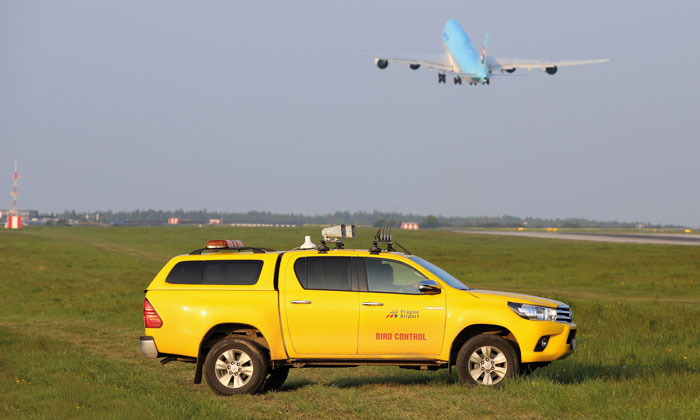Introduction
Wildlife plays a crucial role in maintaining the balance of our ecosystems. However, various threats continue to endanger the survival of many species. It is essential for us to understand these threats and take necessary measures to mitigate them. In this blog post, we will explore some of the common threats to wildlife and discuss effective strategies to protect and conserve our precious biodiversity.
Habitat Loss and Fragmentation
Habitat loss is one of the most significant threats to wildlife. As human populations expand, natural habitats are being destroyed to make way for agriculture, urbanization, and infrastructure development. This loss of habitat disrupts the delicate balance of ecosystems, leading to the decline of many species.
To mitigate habitat loss, it is essential to prioritize the conservation of existing habitats. This can be achieved through the establishment of protected areas, national parks, and wildlife reserves. Additionally, promoting sustainable land-use practices and implementing strict regulations on deforestation can help minimize further habitat destruction.
Poaching and Illegal Wildlife Trade
Poaching and illegal wildlife trade pose a severe threat to many endangered species. The demand for exotic animal products, such as ivory, rhino horns, and tiger bones, drives the illegal wildlife trade, pushing numerous species to the brink of extinction.
To combat poaching and illegal wildlife trade, governments must enforce strict laws and penalties. Increased surveillance and anti-poaching efforts are crucial to deter potential offenders. Additionally, raising awareness about the consequences of wildlife trafficking and promoting sustainable alternatives can help reduce the demand for illegal wildlife products.
Pollution and Contamination
Pollution, including air, water, and soil pollution, has detrimental effects on wildlife. Chemical pollutants, such as pesticides and industrial waste, contaminate ecosystems, leading to the decline of various species. Additionally, plastic pollution poses a significant threat to marine wildlife.
To mitigate pollution and contamination, it is essential to promote sustainable practices and reduce the use of harmful chemicals. Implementing strict regulations on industrial waste disposal and promoting recycling and proper waste management can help minimize pollution. Furthermore, educating the public about the impact of pollution on wildlife and encouraging individual actions, such as reducing plastic consumption, can make a significant difference.
Summary
Wildlife faces numerous challenges in today’s world, primarily due to human activities and environmental changes. Habitat loss and fragmentation, poaching and illegal wildlife trade, pollution, climate change, and invasive species are among the most significant threats. These factors disrupt ecosystems, endanger species, and contribute to the decline of biodiversity.
To mitigate these threats, several approaches can be adopted. Conservation efforts should focus on preserving and restoring habitats, implementing stricter laws and regulations against poaching and illegal trade, reducing pollution through sustainable practices, addressing climate change through mitigation and adaptation strategies, and managing invasive species effectively.
Furthermore, raising awareness among the general public about the importance of wildlife conservation and promoting responsible behavior towards nature is crucial. Engaging in community-based conservation initiatives, supporting local conservation organizations, and participating in wildlife research and monitoring programs can also contribute significantly to mitigating threats to wildlife.
By understanding the common threats to wildlife an look at here now d taking proactive measures to mitigate them, we can ensure the long-term survival and well-being of our diverse and magnificent wildlife species.
- Q: What are some common threats to wildlife?
- A: Some common threats to wildlife include habitat loss, pollution, climate change, poaching, and invasive species.
- Q: How can habitat loss be mitigated?
- A: Habitat loss can be mitigated by preserving and protecting natural habitats, creating wildlife corridors, and promoting sustainable land use practices.
- Q: What can be done to address pollution?
- A: To address pollution, it is important to reduce the use of harmful chemicals, properly dispose of waste, promote recycling, and support clean energy alternatives.
- Q: How can the impacts of climate change on wildlife be minimized?
- A: Minimizing the impacts of climate change on wildlife can be achieved by reducing greenhouse gas emissions, promoting renewable energy sources, and implementing conservation strategies that help species adapt to changing conditions.
- Q: What measures can be taken to combat poaching?
- A: Combatting poaching involves strengthening law enforcement efforts, increasing penalties for illegal wildlife trade, raising awareness about the consequences of poaching, and supporting local communities in finding alternative livelihoods.
- Q: How can the negative effects of invasive species be mitigated?
- A: Mitigating the negative effects of invasive species can be done through early detection and rapid response, implementing control measures, restoring native habitats, and preventing the introduction of new invasive species.

